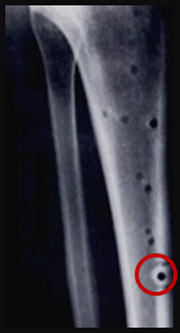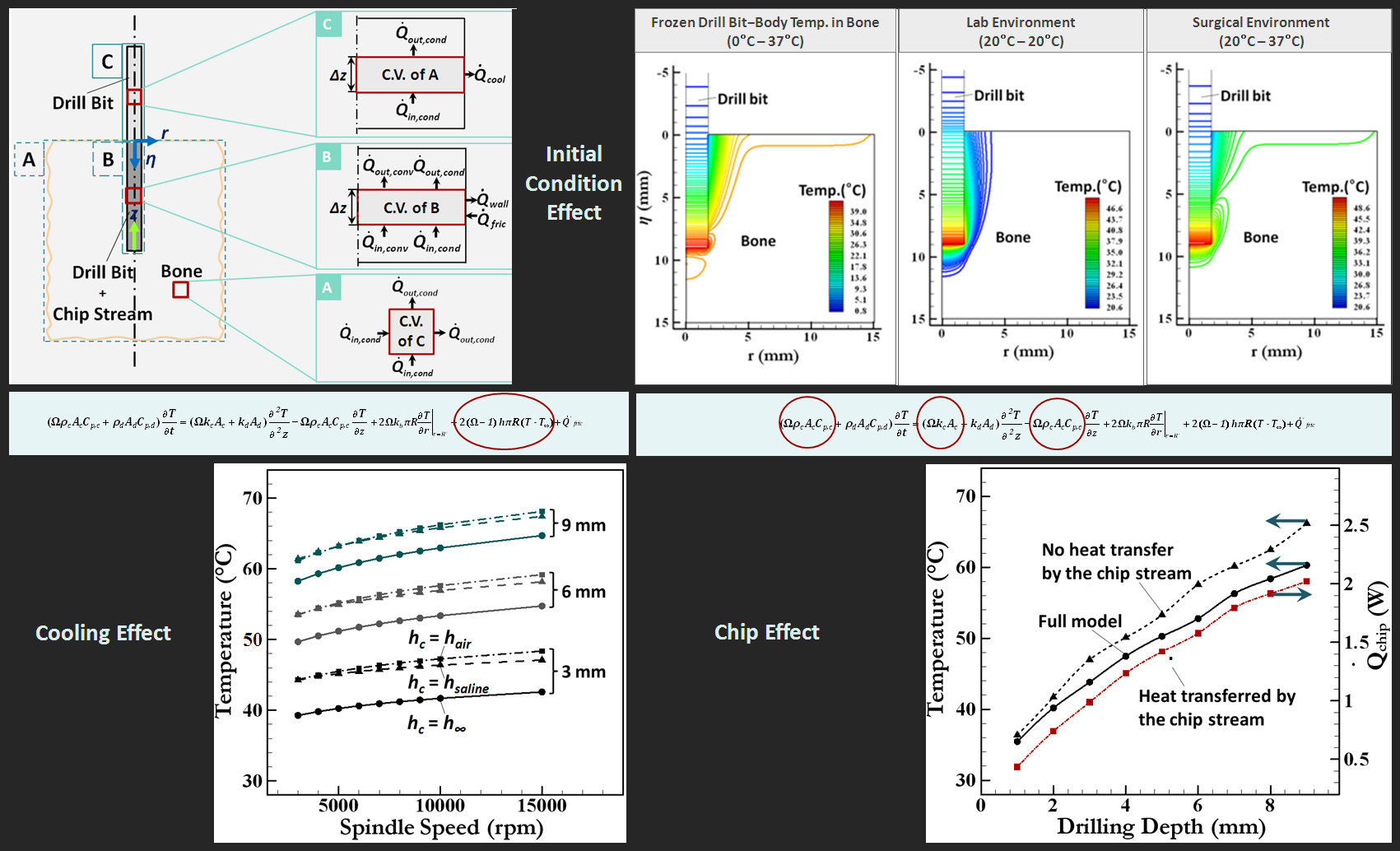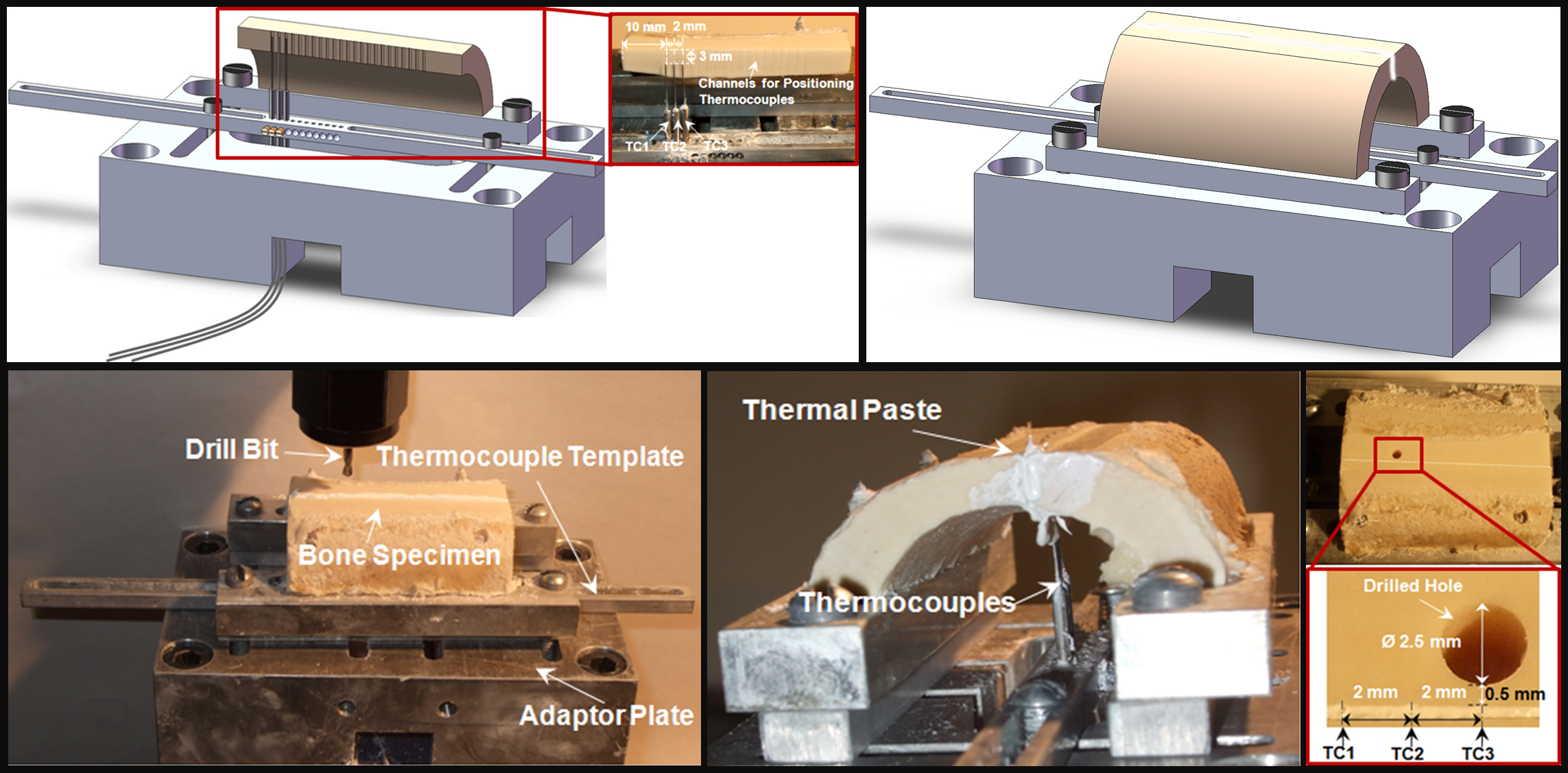In this study, a new constitutive model was proposed for heat transfer in the drill bit and the chip stream, assuming one dimensional axial temperature distribution of the combined thermal system. The new model combines a unique heat-balance equation for the system of the drill and the chip stream, an ordinary heat diffusion equation for the bone, and heat generation at the drill tip, arising from the cutting process and friction. Modeling of the drill-chip stream system assumes an axial temperature distribution and a lumped heat capacity effect in the transverse cross-section. The new model is solved numerically using a tailor-made finite-difference scheme for the drill-chip stream system, coupled with a classic finite-difference method for the bone. The theoretical investigation addresses the significance of heat transfer between the drill and the bone, heat convection from the drill to the surroundings, and the effect of the initial temperature of the drill on the developing thermal field. Using the new model, a parametric study on the effects of machining conditions and drill geometries on the resulting temperature field in the bone and the drill is presented. Results of this study indicate that: (1) the maximum temperature in the bone decreases with increased chip flow; (2) the transient temperature distribution is strongly influenced by the initial temperature; and (3) the maximum temperature increases with increasing spindle speed, decreasing feed rate, and decreasing drill diameter. The model is expected to be useful in determination of optimum drilling conditions and drill geometries.
Thermal Analysis in Bone Drilling

Heat generation during bone drilling may result in thermal injury due to exposure to elevated temperatures, with potentially devastating effects on the outcome of orthopaedic surgery. Depending on the magnitude of the temperature elevation and the exposure time, heat generation during bone drilling may lead to hyperthermia and even carbonization, resulting in cell death and bone-property changes. Similarly, bone resorption may occur due to a sufficient thermal insult and resulting thermonecrosis. During bone drilling, heat is generated mainly from the cutting process (shear deformations) and the friction between the rake face of the drill bit and the chips; secondary heating effects are driven by friction between the chips, drill-bit body, and the bone. Moreover, thermal effects during bone drilling may lead to immediate vascular damage, which, in a somewhat longer term, adds to bone death (osteonecrosis) due to insufficient blood supply
While debate may exist in the literature about the relative significance of the various destructive effects associated with bone drilling, there appears to be a consensus that mathematical modeling of the coupled thermal-machining process is key to the decrease in tissue injury.

An experimental study was performed to investigate the effects of spindle speed, feed rate, and depth of drilling on the temperature distribution during drilling of the cortical section of the bovine femur. In an effort to reduce measurement uncertainties, a new approach for temperature measurements during bone drilling is presented in this study. The new approach is based on a setup for precise positioning of multiple thermocouples, automated data logging system, and a computer numerically controlled machining system (CNC). A battery of experiments has been performed to assess the uncertainty and repeatability of the new approach, which display adequate results. Subsequently, a parametric study was conducted to determine the effects of spindle speed, feed rate, hole depth, and thermocouple location on the measured bone temperature. This study suggests that the exposure time during bone drilling far exceeds the commonly accepted threshold for thermal injury, which may prevail at significant distances from the drilled hole. Results of this study suggest that the correlation of the thermal exposure threshold for bone injury and viability should be further explored.
